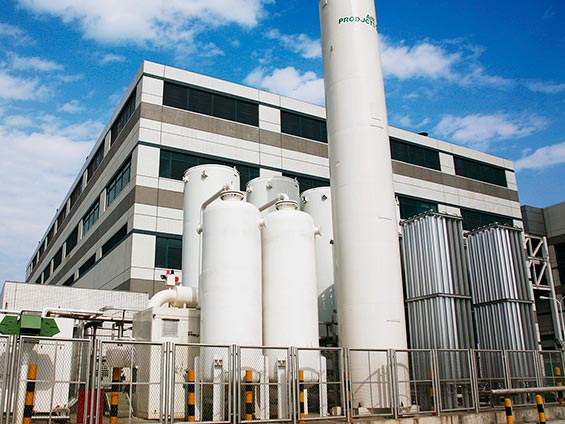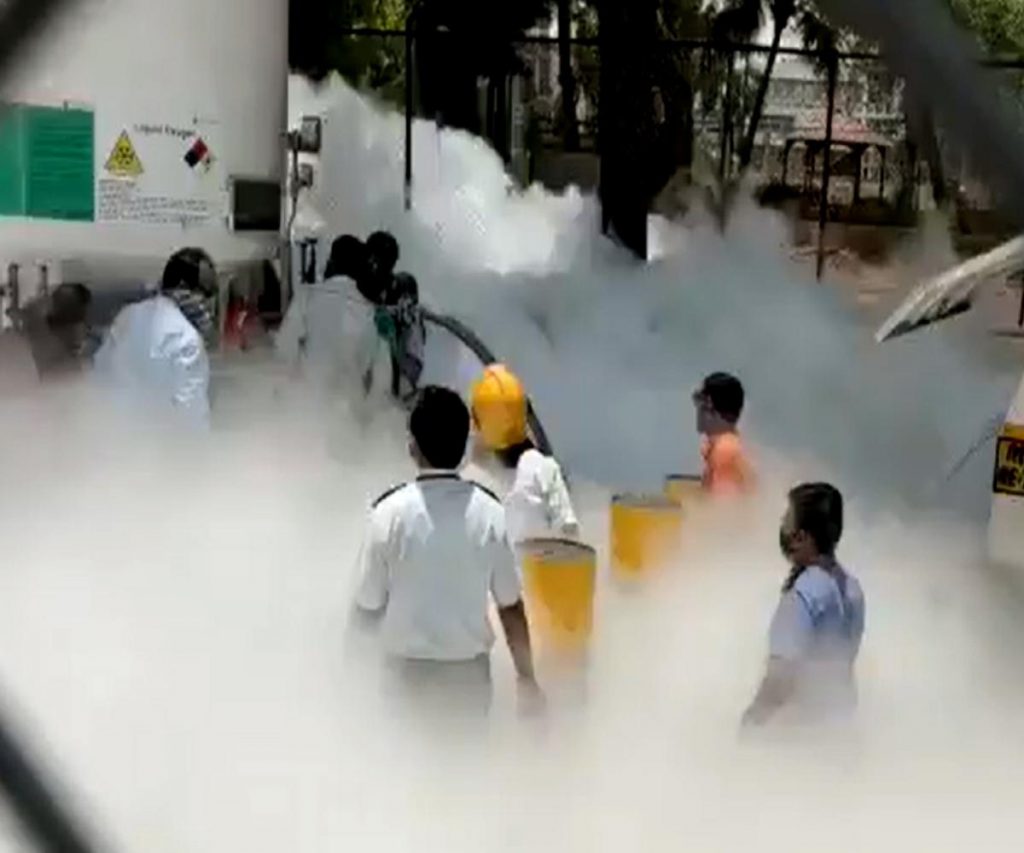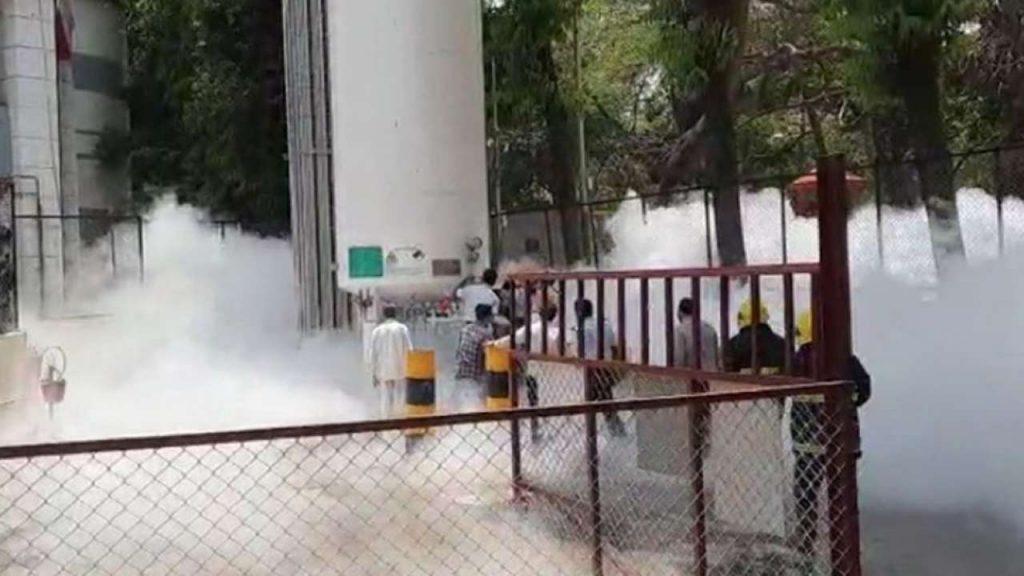Hospital Oxygen Cryogenic Plant/ Oxygen Cylinder Banks
Medical Oxygen (18O2) is the topmost requirement of any hospital in the world nowadays. It is a life-saving entity for patients fighting SARS-CoV-2 disease in the pandemic. Many patients in hospitals worldwide died because of shortage of Medical Oxygen (18O2).
Basically, there are two types of Oxygen Plants/Systems, hospitals are using,
- Oxygen Cryogenic Plant
- Oxygen Cylinder Bank



What happens, when it leaks?
Leakages in Oxygen Plant, whether it is Cryogenic Plant or Cylinder Bank, is always a disaster for any hospital. Medical Oxygen is stored in two states, Liquid Oxygen & Gaseous Oxygen. In Cryogenic Plant both of these states of Oxygen are present whereas in Cylinder Bank only the gaseous state is present.
How O2 Leaks Affect Hospitals?
- The major consequences would be the death of patients admitted to hospitals & dependent on Oxygen.
- Financial Losses – It causes financial loss to hospitals as Precious & Costly Medical Oxygen gets wasted.
- Sudden System Failure During Emergencies – Serious Patients on Oxygen/Ventilator, in Operation Theater under complicated Operation, may get affected & may lead to fatal cases.
- Requirement of Oxygen Increases – An International Study says leakages in Oxygen Systems in hospitals may go to 30 – 50%. Single patient on high flow nasal cannula (HFNC) uses over 86,000 litres of oxygen per day. To supply this much Oxygen to a patient with a leaking O2 system, the hospital’s demand of O2 per patient may go up to 172, 000 litres per patient per day. This will stress not only the hospital but on the government to supply this increasing demand in the situation of pandemic.
Oxygen Cryogenic Plant
There are many components/ parts of this Cryogenic System, through which O2 may leak,
- Warm End Containers – It is having a Compressor, Air Receiver, Pre- Filters, Chiller, & Air Purification Unit.
- Cold box – It contains main heat exchanger, boiler, distillation column & turbine
- Storage – It contains Liquid Oxygen Tank, Vaporiser, Filling Station
There are many places in these systems from where the leakages are possible & those are the inspection points. The inspection points may be, Vent Valves, Pressure Gauge Fittings, Rupture Disk, Liquid Valves, Gas Valves, Relief Valves, Outer Vessel Welding Joints, Cold Box Valves, Vacuum Valves, Bends, Reducers, Joints, Junction, Pipelines etc.
Each plant may or may not have all these components. We inspect each of these parts, joints, junctions, pipelines thoroughly and detect even a small leak of 0.1 mm.


Oxygen Cylinder Bank
The leakages through this system may happen through many parts like Manifold, Manifold Fittings, Manifold Valves, Pressure Regulator Fittings, Pressure Gauge Fittings, Cylinder Valves, Line Valves, Copper Tubing, Regulators in Operation Theaters, ICU’s, Wards etc.
We check each and every point and can find leaks of costly Oxygen even through 0.1 mm hole size.
How We Detect Leakages in Oxygen Systems?

In India, leaks are checked with soap water. It is like travelling hundreds of kilometres in a bullock cart. One cannot really check each point in the system with this method. Many leaks can be unseen and hence, the losses don’t reduce much.
We inspect the system leaks with Airborne Ultrasound Detector. We have specialized SDT make Ultrasound Detector, SDT 270 to check the leakages in the oxygen system. Our Ultrasound Analysis Level 2 certified Engineers/Analysts are having experience of about 10+ years in such leak detection of different gas/compressed air/fluid systems. Each and every point even at a distance & unreachable places can be inspected with SDT 270 instrument & even a hole of 0.1 mm can be detected easily. In a day or two whole systems of any size of hospital can be inspected easily.
It is a much cheaper and most effective method of leak testing.
Areas of Inspection in Hospital
 There are two distinguished areas in any hospital in today’s circumstances, Non – Covid Areas & Covid Areas. Non-Covid Areas can be Non-Covid ICU’s, Non – Covid Wards, Operation Theaters & Incubators. The Covid Areas may be Covid ICU’s & Covid Wards.
There are two distinguished areas in any hospital in today’s circumstances, Non – Covid Areas & Covid Areas. Non-Covid Areas can be Non-Covid ICU’s, Non – Covid Wards, Operation Theaters & Incubators. The Covid Areas may be Covid ICU’s & Covid Wards.
We use all protective gears, PPE kits while doing inspections in COVID areas. We follow each and every protocol of WHO & of the hospital while rendering our services in the COVID Area.

